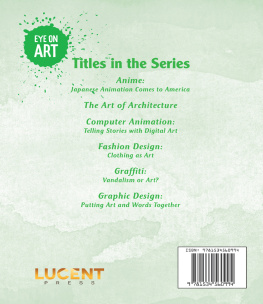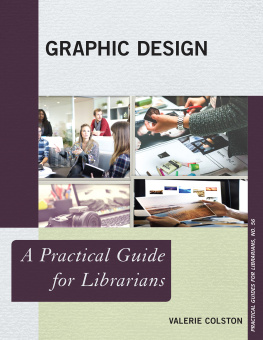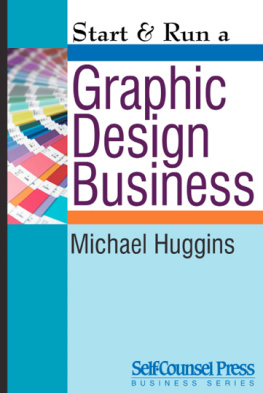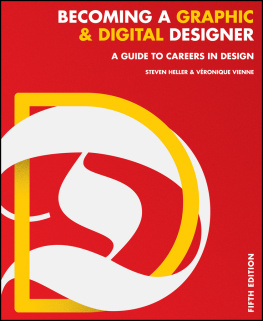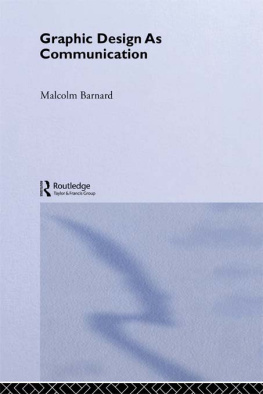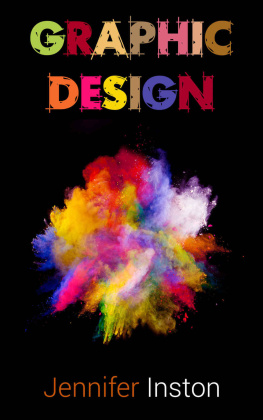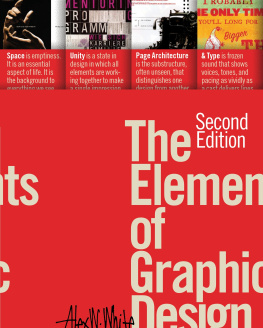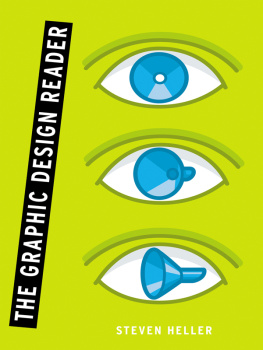Published in 2018 by
Lucent Press, an Imprint of Greenhaven Publishing, LLC
353 3rd Avenue
Suite 255
New York, NY 10010
Copyright 2018 Greenhaven Press, a part of Gale, Cengage Learning
Gale and Greenhaven Press are registered trademarks used herein under license.
All new materials copyright 2018 Lucent Press, an Imprint of Greenhaven Publishing, LLC.
All rights reserved. No part of this book may be reproduced in any form without permission in writing from the publisher, except by a reviewer.
Designer: Seth Hughes
Editor: Jennifer Lombardo
Cataloging-in-Publication Data
Names: Reynolds, Donna.
Title: Graphic design: putting Art and words together / Donna Reynolds.
Description: New York : Lucent Press, 2018. | Series: Eye on art | Includes index.
Identifiers: ISBN 9781534560994 (library bound) | ISBN 9781534561007 (ebook)
Subjects: LCSH: Graphic arts--Juvenile literature.
Classification: LCC NC997.R49 2018 | DDC 740--dc23
Printed in the United States of America
CPSIA compliance information: Batch #BS17KL: For further information contact Greenhaven Publishing LLC, New York, New York at 1-844-317-7404.
Please visit our website, www.greenhavenpublishing.com. For a free color catalog of all our high-quality books, call toll free 1-844-317-7404 or fax 1-844-317-7405.
Contents
Foreword
Introduction
The Art of Words
Chapter One
Art in Everyday Life
Chapter Two
Design in Books
Chapter Three
Posters for Decoration and Persuasion
Chapter Four
Design in Advertising
Chapter Five
Modern Design
Notes
For More Information
Index
Picture Credits
About the Author
Foreword
W hen many people think of art, the first things that come to mind may be paintings, drawings, sculptures, or even pictures created entirely with a computer. However, people have been applying artistic elements to almost every aspect of life for thousands of years. Human beings love beautiful things, and they seek beauty in unlikely places. Buildings, clothes, furniture, and many other things we use every day can all have an artistic aspect to them.
Attempts to define art have frequently fallen short. Merriam-Webster defines art as something that is created with imagination and skill and that is beautiful or that expresses important ideas or feelings. However, almost no one refers to the dictionary definition when attempting to decide whether or not something can be considered art. They rely on their intuition, which leaves much room for debate between competing opinions. What one person views as beautiful, another may see as ugly. An idea that an artist feels it is important to express may hit home with some people and be dismissed by others. Some people believe that art should always be beautiful, while others feel that art should be unsettling enough to pull people out of their comfort zone. With all of these contradictory views, it is no wonder that the question of what is art is so often disputed.
This series aims to introduce readers to some of the more unconventional and controversial art forms, such as anime, fashion design, and graffiti. Debate on these topics has often been heated, with some people firmly declaring that they are art and others declaring just as firmly that they are not. Each book in the series discusses the history of a particular art form, the ways it is created, and the reasons why it is considered artistic. Learning more about these topics helps young adults recognize the art that is all around them as well as form their own opinions about this complex subject.
Quotes by experts in various art fields enhance the engaging text. All quotes are cited so readers can trace them back to their original source, giving them a starting point for further research. A list of recommended books and websites also allows young adults to delve deeper into related subjects. Full-color photographs give vivid examples of the artistic works being described in the books so readers can visualize the terms they are learning.
Through this series, young adults gain a better understanding of a variety of popular art forms. They also develop a deeper appreciation for the artistry that is inherent in the things they see and use every day.
INTRODUCTION
The Art of Words
G raphic design is everywhere in todays society, to such an extent that many people no longer consciously notice it. Many business logos, T-shirt designs, posters, and other everyday items carry examples of graphic design. Some designs are intended to sell products; others are done as a way for artists to communicate a particular message. Some people feel that graphic design should not be considered art, but others believe the skill and time required to create beautiful, eye-catching designs qualifies graphic designers as artists.
In its earliest days, graphic art was based on mixing art, craft, business, science, technology, and language. In the 15th century, the science of ink and paper production was blended with the technology of the printing press. This created the business of book production, in which graphic artists combined art and language. In the 19th century, science and technology led to the invention of the lithographic press, the camera, and the photogravure reproduction process. These developments created a mass-media revolution that was driven by eye-catching graphic designs. Today, designers continue to rely on art, craft, business, science, technology, and language to create cutting-edge websites, as well as more traditional forms of graphic design.
The Debate Over Graphic Design
However artful their products may be, graphic designers are not considered fine artists such as painters and sculptors. Because most graphic art relies on words and text as well as pictures and illustrations, graphic designs are generally considered forms of communication rather than art. While fine artists often rely on obscure symbolism that can be interpreted in numerous ways, it is generally required that graphic artists communicate messages clearly so they can be understood by nearly everyone.
That is not to say that the artistic aspect cannot be emphasized in graphic design. In fact, some of the great art movements of the past century, such as modernism, art deco, and cubism, found their way into graphic arts. By incorporating these styles into their work, graphic artists rejected the division between fine art and commercial art. In doing so, they created a visual poetry that inventively combines words and images into clever and aesthetically pleasing messages. Like any good art, quality graphic arts can fuel the imagination.
While the majority of graphic art is used for mundane communications, lasting designs have become part of the social fabric. For example, the Coca-Cola logo is instantly recognized in nearly every country on Earth. Logos for other companies, such as Apple, Mercedes Benz, and McDonalds, are similarly well-known.
Painters such as Leonardo da Vinci might have incorporated dozens of symbols into a single painting that viewers could debate for centuries, but Coca-Cola wants to sell its product to people in America, Armenia, and Afghanistan. A simple piece of graphic art has allowed them to communicate this message to billions of people speaking thousands of languages in hundreds of countries throughout the world.
CHAPTER ONE
Art in Everyday Life
T he challenge graphic designers take on with their work is how to communicate quickly, clearly, and effectively. Their work must send a message that can be understood by the majority of people who see it. In addition to using text, graphic designers can achieve this goal by using picture images called pictographs or pictograms. These let them communicate even with people who do not speak the same language. Pictograms are simply pictures of the thing they represent; for instance, a picture of a bicycle communicates the idea of a bicycle.

